Destined to Fail: The Ministry of William Meirion Evans
Gary Hill
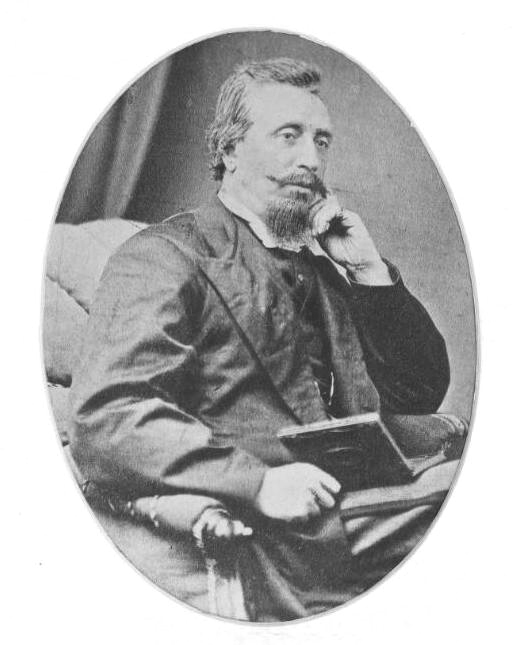
About thirty years ago, I was fortunate to have met the Welsh historian Lewis Lloyd, only a few years before his early death. At the time he was Senior Tutor in Politics at Coleg Harlech where I was a student of psychology and Welsh. Chatting informally with a group of students, he recognised my (then stronger) Australian accent and enquired as to whereabouts I was from. I learned that he had earned his PhD at the Australian National University with a thesis on mining law. He had also published a book in the late-1980s, entitled ‘The Welsh in Australia’, which documented the impact of individual Welsh immigrants to the Australian colonies and the later federated nation. The state I lived in, South Australia, has a rich copper mining heritage and we chatted about the towns of Moonta and Wallaroo, Burra and Kapunda, all places I know reasonably well as I had friends who had grown up in, or had lived in these towns and had sometimes visited them.
One of the case histories included in Lloyd’s book particularly interested me; that of William Meirion Evans who hailed from the Gwynedd village of Llanfrothen, about a 20-minute drive north of Harlech. William Evans had emigrated to South Australia, eventually finding himself in Burra and later in the Victorian towns of Ballarat and Melbourne, via the USA. He was a preacher and a champion of Welsh language and culture. It is said he was a good, kind-hearted man. His story has stayed with me because Llanfrothen became the village where I have lived for nearly 20 years and because William Evans enacted three ‘firsts’ in Australia. Here is a short biography.
William Meirion Evans was born on August 12th 1826 at Isallt Fawr, Llanfihangel-Y-Pennant in Caernarfonshire, now part of the county of Gwynedd. He was the son of a farming couple, Edmund and Mary, née Williams. In infancy he moved to the much smaller cottage known as Gatws Parc, between the villages of Llanfrothen and Croesor and it is this locality in Meironydd (also part of Gwynedd) which he identified with during his years in Wales. It is worth mentioning that Isallt Fawr was also the birthplace of the mother of another noted Welshman, the musician David Owen, better known as Dafydd Y Garreg Wen. I have written of Dafydd in my essay 'Four Graves at Ynyscynhaearn'.
Although there had long been a church in Llanfrothen, Evans’s parents did not attend as they were devout Welsh ‘chapel people’. They belonged to the Calvinistic Methodists, the only Nonconformist denomination of Welsh origin without affiliation to an English religious body. It is important to emphasise the distinction in Welsh society between chapel and church. The Anglican-based ‘Church in Wales’ had long been associated with cultural 'Englishness' and 'landlordism' and catered largely to the 'aspiring' Welsh who spoke English by choice, even when their own language could be fully understood and fluently spoken. In other words, attending church was a prime social indicator of influence and wealth.
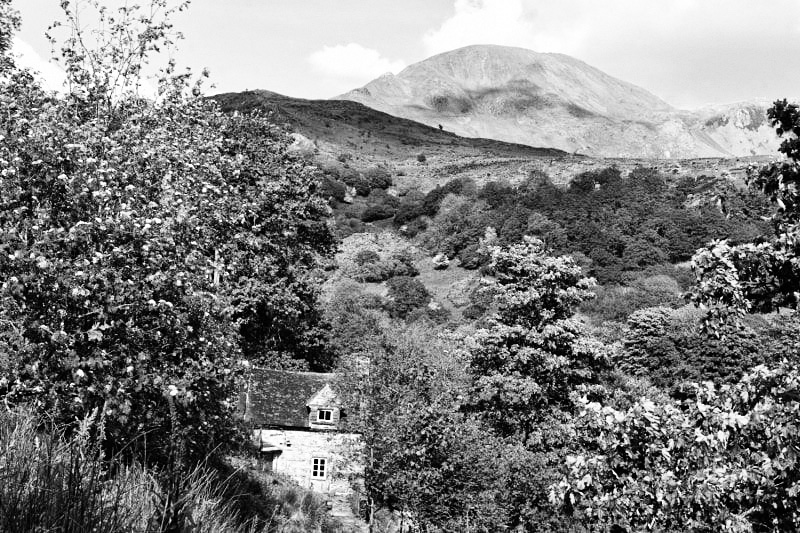
Because of this, until the 1700s the organised, state-sponsored religion of the church had relatively little impact on the lives of the majority Welsh-speaking tenant population of North Wales. About 1730, however, a Nonconformist revival, initiated by Baptists and Methodists, swept through Wales. This revival lasted well into the period between the two world wars and was characterised by the building of myriad plain, rectangular chapels, minus steeple or bell, in which fiery sermons voiced a disapproval of alcohol, gambling, dancing and games, and working on a Sunday. For fervent chapel goers this included a pacifist stance and a refusal to fight in wartime. What really marked the chapel culture out as different, however, and endeared the movement to the ordinary people was that chapel services and preaching were done exclusively through the medium of the Welsh language (and still is for the relatively few chapels that remain in Wales). Thus, whereas in neighbouring England the various Christian denominations often cut across social divisions and to some degree neutralised them, in Wales the opposite was the case and social distinctions coincided with, and were intensified by, differences in both Christian denomination and language.
Arguably, the effect that chapel culture had on the native Welsh population cannot be overestimated and the chapel was, for over 150 years, the principle symbol of Welshness in every town and village in Wales. The Sunday schools run by the individual chapels did not confine themselves to religious instruction and taught many thousands of children and adults to read and write in the Welsh language long before primary schooling became universally available (and then available only in English, a policy which was rigidly enforced even at the local level). It was at the Sunday school run by the Siloam Calvinistic Methodist chapel in Llanfrothen where the young William Evans learnt to read. Eventually he became a Sunday school teacher himself while, like many of his contemporaries in Llanfrothen, he worked as a quarryman at the nearby Ffestiniog slate mines.
At about this time, the young colony of South Australia was experiencing an economic boom resulting from finds of considerable quantities of copper. Experienced miners and quarrymen were in high demand and increasingly sourced from the mining communities of Cornwall and Wales. Seizing the opportunity, William Evans set sail for Adelaide, the capital city of South Australia, arriving on May 19th 1849. In his initial year in the colony he worked short stints at several mining concerns, firstly at the Yatala smelting works, immediately north of Adelaide, followed by the Willunga slate quarries, south of Adelaide. Later that year he relocated to the much larger copper mines of Aponinga and Burra, about 160km km north of Adelaide.
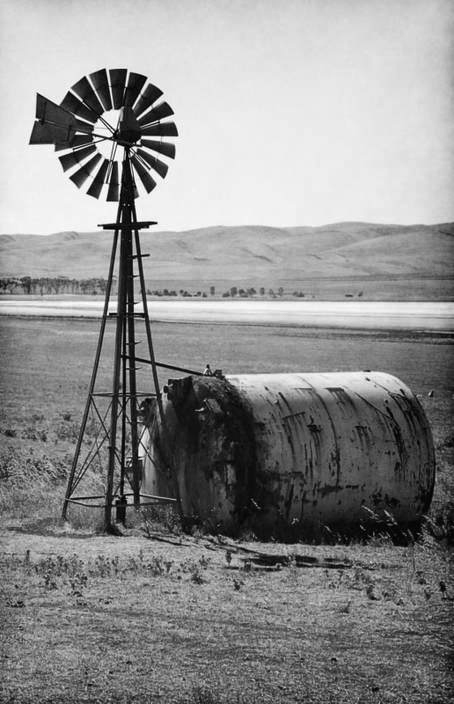
Though very far from home, Evans would not have felt alone in South Australia. The prospect of plenty of work and money had attracted large numbers of Welshmen to the copper mines at Burra, then the largest metal mines in Australia, supplying 5% of the world’s copper. In 1846 there were estimated to be about 300 Welsh-born miners at Burra. Within five years this number had tripled. One mining company arranged for the immigration from near the town of Llanelli in South Wales of an entire smelting factory, including machinery, tooling, workers and their immediate families. The majority of these workers, like Evans, were monoglot Welsh speakers and so, initially at least, they tended to live in Llwchwr, a closely-knit, purpose-built quarter of 44 lots to the north of Burra township, named after a village to the west of Swansea, to which they in turn named streets after nearby places such as Llanelli, Llysnewydd and Penclawdd.
Although only 23-years old and not yet an ordained minister William Evans nevertheless perceived a need to begin preaching in such a “godless place” as the Burra mining settlements. Unfortunately, however, his command of the English language was very limited and so he was only effectively able to preach to his fellow countrymen. As a result, he is now recognised to be the first person to preach in the Welsh language in Australia. Nevertheless, despite his efforts, his particular brand of Calvinistic Christianity did not catch on in Burra and by 1860, although there were two Welsh chapels established, neither was Methodist, one being Baptist and the other Congregationalist.
In 1852 he moved to the large gold mining field at Bendigo in the neighbouring colony of Victoria were he is said to have made a considerable sum of money in a very short time. One source claims this was somewhere between £800-£1000. William Evans returned to Llanfrothen in 1853 and, ever the traveller, he then migrated again, this time with his parents, ten year old brother Richard and sister to a farm at Apple River, Elizabeth Settlement, Illinois, USA. Two years later, on June 9th 1855 he married Mary Jane Hughes, the Welsh-speaking daughter of a settler family from Ynys Môn, with whom he opened a small merchant store in Dodgeville, Wisconsin. Unfortunately, Evans' business partner defrauded him out of his money and the business became bankrupt with considerable debts. Undeterred in his Christian faith he continued to serve as a lay preacher at Apple River until, in June 1861, he was ordained as a minister at the Welsh Calvinistic Methodist Church in Columbus, Wisconsin. He is also known to have campaigned for Abraham Lincoln in the 1860 Presidential election. Like the mining settlements in Australia, Wisconsin at that time had a particularly strong history of expatriate Welsh ‘chapel culture’. Indeed, emigration to the United States from North-West Wales was prolific at that time. A generation later, in the 1890s the Welsh historian Dyfed Evans observed that, of the 104 children attending Llanfrothen village school, he could not find one who did not have a relative living somewhere in America. In 1854, ‘Y Drysorfa’, the monthly periodical of the Calvinistic Methodists in Wales, remarked:
“It is a remarkable and comforting aspect of the Welsh character that no matter where they go if there are any number of them together they establish a social place of worship in the Welsh language. In the great cities of England, in the coal mines and iron works of Scotland, in the various states of America and now on the gold fields of Australia, the Welsh emigrant must hear of the great works of God in his own language."
By the time of William Evans’s ordination Mary was in poor health but, because he felt morally bound to pay off his debtors, he returned alone to Australia, leaving his wife and two infant daughters, landing at Melbourne in the colony of Victoria in March 1863. He immediately headed for the Ballarat goldfields, home to a third of the Welsh-born immigrant population in the Australian colonies at the time, numbering over 2000 people. For a short time he returned to his previous lifestyle of mining and part-time preaching, and is recognised as the first ordained minister to officiate at a Welsh-speaking communion in Australia. The following year he was appointed full-time minister of the Welsh Calvinistic Methodist chapels at Ballarat, Sebastopol and Cambrian Hill.
He returned again to Wales briefly in 1865 primarily on church business, then onto America, where Mary was well enough to return with him to Ballarat. Tragedy struck the family again, however, as just a few weeks before they set sail for Australia, William and Mary's two young daughters died separately within two weeks of each other. Despite this loss his desire to help others was undiminished and, still largely monoglot Welsh, he later wrote of how his:
“...........utter lack of ability to speak fluently in the English language prevented me from comforting my fellow passengers who suffered during the voyage”.
The same year also saw William Evans produce another first on Australian soil: publication of the first work in the Welsh language, ‘Yr Ymgeisydd’ (‘The Endeavourer’ or ‘The Candidate’; published in Castlemaine, Victoria to coincide with an Eisteddfod, a Welsh cultural festival) This was destined for one edition only, none of which have survived. It has been claimed that William Evans became an enthusiastic supporter of Welsh language publications after the Welsh Calvinistic Methodist Connexion had a pamphlet printed by an Australian company in 1863 which contained a large number of embarrassing spelling and grammatical errors. Inspired by the success of his first publication, William Evans and Theophilus Williams (manager of the Llanberis Gold Company and originally from Loughor near Swansea) co-edited from July 1866 a monthly journal titled ‘Yr Australydd’ (‘The Australian’) which sold for a modest 6d with copies circulated throughout all the Australian colonies and as far as New Zealand. According to the minutes of meetings held by the Welsh Calvinistic Methodist Connexion, who partly funded the enterprise, the original intention was for a weekly publication but a monthly edition was deemed more feasible.

Not surprisingly given the people involved, the first edition’s editorial stated that the aim of the journal was to "gwasanaethu ein cenedl mewn llenyddiaeth, moesoldeb a chrefydd" ("serve our nation in literature, morality and religion") and an analysis of the first two year’s editions (1866-67) shows 22% of the articles to be theological in nature while general news from Wales was the province of only 3% of the content. There was a particularly strong emphasis on the social and cultural aspects of the Welsh community in the Australian colonies such as Eisteddfodau and Cymanfaoedd Canu (hymn-singing meetings). It is interesting to note, however, that a similar analysis of the final two years of ‘Yr Australydd’ (1871-72) reveals that articles with theological themes had decreased to only 13% of the content. A further notable aspect of the journal’s content was the consistent avoidance of discussion of political issues.
Another important thrust of the journal, however was to further 'Yr Achos Cymraeg' (The Welsh Cause, i.e., the survival of the Welsh language and culture in Australia) and to do this Evans and Williams actively encouraged contributions from the readership. These often included ordinary miners and manual workers whose literacy, like that of William Evans, resulted not from formal education, but to attendance at chapel Sunday schools. Published contributions included poetry and short stories, as well as a serialised novel in 1870 entitled, ‘Cymro Yn Awstralia’ (‘A Welshman in Australia’).
Publication of ‘Yr Australydd’ ceased in 1872, for reasons which remain unclear. However, letters written to William Evans indicate that there was a drop in subscriptions from 496 to 200 due to subscribers moving away and often becoming untraceable. Ironically, the transient nature of Welsh migrants to the Australian colonies, moving to wherever work was available, was something that characterised William Evans’s own life. Another factor was the fact that two-thirds of the Welsh speakers in Australia (who at their peak never totalled more than 2% of the population) were male and, for the most part, initially monolingual. The Welsh chapels were particularly keen to see the single men married, and often used this theme in their sermons, as they considered the stability of marriage as the best way to prevent them from falling into and continuing their ungodly ways. However, the shortage of Welsh-speaking women forced them to marry outside of the Welsh community adding to the loss of the language in the next generation. This, along with the inevitable gradual decline in the use of a minority language in a land where English was the lingua franca, probably sealed the fate of ‘Yr Australydd’. Indeed, the whole notion of ‘Yr Achos Cymraeg’ in Australia was, in hindsight perhaps, a venture that was always destined to fail. Tegid,writing in Yr Australydd in July 1868 noted that Welshness was fast becoming:
“something to talk and boast about around the time of eisteddfodau and similar meetings, but never to be put into practice.”
As English was used more and more in daily life, the ability to use the language was also declining among those who considered Welsh to be their first language. This is exemplified by the keynote speaker at the 12th Ballarat Eisteddfod in 1867, Dr David John Thomas (1813-1871). Dr Thomas was a first-language Welsh speaker hailing from Llangadog in Carmarthenshire. After training in Wales, Thomas had become a respected physician in Australia, and the first to use anaesthesia, less than a year after it's dicovery. He gave his speech in English, apologising that because he had not used Welsh habitually for 35 years, he felt he could better express himself in English. This general decline in use of the Welsh language, especially among those born in Australia, was no less evident in the chapels, where a shortage of preachers fluent in the Welsh language had resulted in the substitution of English during an increasing number of services. In stark contrast to the chapel culture in Wales, by the end of the 19th century all the Welsh chapel denominations in Australia had introduced English into at least some of their services and, after 1894, even the Calvinistic Methodists, the bulwark of the Welsh language in Australia, recorded the minutes of their assembly meetings in English.
For the first time William Evans must have felt like an outsider among his own congregation because, despite having lived in English-speaking countries since his early 20s, he was still unable to hold a conversation in English, though he could read English to some degree at least, with the aid of a dictionary. Another of Evans’s editorials from ‘Yr Australydd’, this time from 1872, noted that
“One of the first things which strikes an aware person with any knowledge of the history of the Welsh in Australia is the large number who are completely unconcerned with religion if it is unobtainable in their own language. For some reason, if unavailable in Welsh, religious services in English are neglected.”
The same year an article penned by an unknown author with the nom-de-plume ‘Yr Hanesydd’ (‘The Historian’) referred to the decline in religiosity with some hyperbole:
“There is room to fear that a large number of Welsh people in this country were once religious adherents but by now are rapidly falling to such a degenerate state that there is not a minute to waste in organizing their succour.”
There are three more important reasons for the decline in religiosity among Welsh immigrants, however, and these lie not in the wider community but firmly at the door of the chapels and their congregations, both in Wales and in Australia. Firstly, there were the seemingly endless disagreements between the five different chapel cultures present in the Ballarat area in the 1860s. Such conflicts could be particularly vexatious, often causing rifts within families and whole villages and towns. They had plagued the contemporary religious scene in Wales and so were not unique to the Australian colonies. At first glance, unlike the differences in doctrine and theological interpretation that usually characterise differences between Christian groups, the Welsh schisms concerned governance of the chapels. While Evans’s Calvinistic Methodists had elected church governments, for example, the Independent Methodists advocated majority leadership by the entire congregation. Arguably, however, these differences did reflect theological issues as they were ultimately concerned with each denomination’s interpretation of how an individual may relate with God and the strength of the mediating role of the chapel in that relationship.
Joseph Jenkins, the famous Welsh swagman (itinerant worker, similar to the American hobo) who left his farm and family in Wales, aged 51 years, to lead an itinerant lifestyle in colonial Victoria for 25 years and who kept a daily diary for 58 years of his life (see my essay 'Once a Not So Jolly Swagman: The Story of Joseph Jenkins') expressed in 1879, simply and eloquently, his exasperation with the schisms:
"Four miles away (in Castlemaine) there are three chapels belonging to different denominations. They are so close together that they are for ever quarrelling. Mrs Lewis and her son walked to chapel to listen to a Welsh sermon, and I walked into the bush to meet my God."
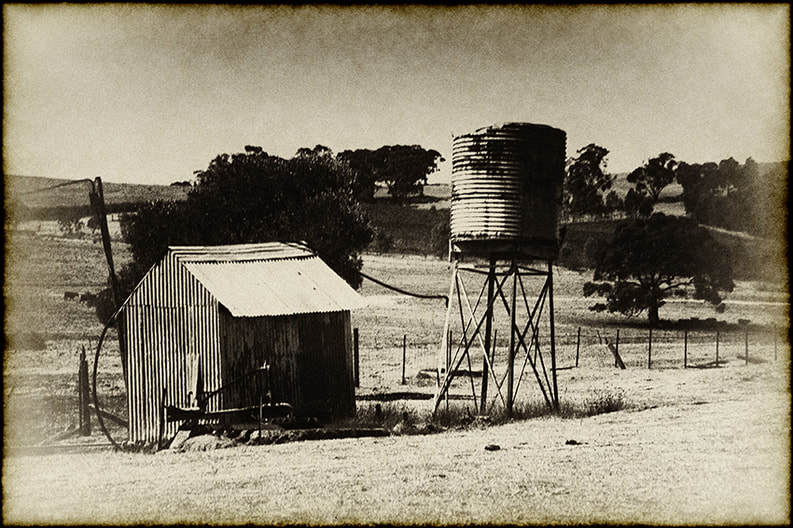
It is interesting to compare Evans’ attitude to his new country with that of Jenkins and William Evans' two siblings, who had stayed in the USA. Jenkins had learned English and despite retaining an active interest in Welsh culture and winning the Premier Prize at the Ballarat Eisteddfod for his englyn (forms of Welsh verse with strict adherence to quantitative metre) he wrote all his diaries in English, in order to further master the language. There exists also a manuscript written by William Evans's sister detailing her family's early life and their voyage to the USA. This too was handwritten in English. William Evans's brother, Richard, who made his living selling wares to the armed forces in Fort Hayes, later became the first mayor of Dodge City and was reputed to have been a close friend of Buffalo Bill. It is unlikely he would achieved all this without an adequate command of the English language.
It is perhaps surprising that the divisions between the denominations that were so embedded in Welsh society spilled over to the Australian colonies. Being in a foreign land yet with a language in common offered a real opportunity for Welsh emigres to rid themselves of the less desirable aspects of Welsh social and cultural baggage accumulated over the years. Lewis Lloyd describes the Welsh immigrants as undertaking:
“......a venture that was more communal than individualistic. Most had left a cherished if agitated district of a land characterised, in their eyes, by economic exploitation and social deference, a land in which an alien church milked dry a Nonconformist people.....the image of downtrodden Wales lived long in the memories of many emigrants and their Australian-born children”.
Secondly, the Calvinistic Methodists back home in Wales appear to have shown scant regard for members of their church in Australia. Despite repeated requests to send ministers and missionaries to the Australian colonies the parent organisation in Wales remained deaf, for some reason much preferring to send ordained men and missionaries to India. This attitude is known to have hardened some attitudes toward their parent church. Indeed, one of the reasons Evans travelled to Wales in 1865 en route to the United States was to present a letter to the church Assembly from the Calvinistic Methodists in Australia pleading for Welsh-speaking ministers to be sent. As he later commented in his characteristically mild manner during a lecture in Ballarat in 1868:
We, as a small number of Methodists in the country, are very like orphaned children, left alone to deal with our circumstances as best we can".
And a stronger comment, this time from a member of the Assembly in 1865 at Liverpool, England:
"I was amazed at the gross selfishness and ignorance that people’s leaders showed in discussing such an important matter. … In providing for Brittany and India no expense was spared. But when it came to Australia one would think there was a crowd running to be the first to put a lock on the chest".
Thirdly, some of the Welsh-speaking chapel-based community were gaining a wider reputation for being anti-English and insular. In order to counteract this perception there was a growing shift toward presenting the Eisteddfod as more of a secular festival promoting musical talent than a religiously-inspired literary festival. As a result, competition entrants began to appear from outside the Welsh community. This did not go down at all well with some correspondents to 'Yr Australydd'. One, 'Carw Gwyllt', wrote in 1866:
“......if this [Welsh literature] is left out and it’s meetings used for other purposes, the reason for it’s existence is lost” and again, four years later "What rationale will we have to call ourselves Welsh people when in practice we will have lost the language of the Welsh?”
Joseph Jenkins was of the same opinion. From a diary entry of January 1877 (ironically, written in English):
"The Eisteddfod in Ballarat on next St David’s Day is to be more of a concert where singing takes the place of [literal] composition. I do not think that singing alone is of any advantage to keep up the language of the Ancient Britons. I cannot imagine what the patrons of the Eisteddfod Fawr Caerffyrddin would say to parading this concert as an Eisteddfod."
During his time editing ‘Yr Australydd’ Mary’s illness returned and she died aged only 31 years in April 1869. On November 7th the following year, William Evans remarried, this time to a widow, Ellen Jones née Roberts, and this time he fathered three healthy daughters within the space of four years; Ellen Winifred born in 1871, Annie Sophia, born 1873, and Eliza Jane, born 1875. Five months after his marriage to Ellen the Welsh Calvinistic Methodist General Association of Victoria appointed William Evans as minister and overseer of the building of their planned chapel at 320 LaTrobe Street, Melbourne. It was considered a difficult task as there seemed to be little enthusiasm for the venture. The existing chapel and adjoining house were in a parlous state of repair and the congregation had dwindled to 25 souls. Previous attempts to build a new chapel had failed because sufficient money could not be raised.
Nevertheless, Evans's repaired the old chapel house, often with his own hands, and embarked on a tour of the colony giving public talks in order to raise money for the new chapel. His efforts were rewarded; the Gothic-style ‘Welsh Church’, as it is now known, opened on New Years Eve 1871 to a congegation of 300 and remains to this day the only church in Australia to conduct regular services in Welsh. In addition to his preaching duties within the Welsh Church, William Evans also acted as chaplain to the Welsh patients at the Melbourne Hospital and would meet incoming passenger ships at Port Melbourne in case there were Welsh migrants on board. If they were arriving homeless, he would let them stay in a large shed in the grounds of the Welsh Church.
Undaunted by the decline in religiosity and in the use of the Welsh language, William Evans established another monthly journal in October 1874 named ‘Yr Ymwelydd’. Initially published in Smythesdale in the Ballarat area he later relocated it to Melbourne. Again the price was set at an affordable 6d. Interestingly, although the title of ‘Yr Australydd’ suggests some permanence of affinity to Australia (the correct Welsh translation of Australian is ‘Awstralydd’; ‘Australydd’ was an invented word, a deliberate amalgamation of the English and Welsh words) a translation of the title of the new journal (‘The Visitor’) is more suggestive of a temporary relationship with the Australian colonies. Or perhaps it was a wry comment by Evans on the itinerant nature of the Welsh community, and himself, at that time?
Another departure in attitude from ‘Yr Australydd’ was an increase in the amount of religious content, intended possibly, as a fightback against the decline in religiosity by the intended readership. Indeed, for the two years of publication, fully 46% of the content was concerned with theological issues. As the first edition’s editorial stated:
“…the fact that we are without any service in the medium of Welsh at our disposal in this country, is reason in itself why we should endeavour to fill the gap and redress the deficiency....…Yr Ymwelydd is meant to be a truly religious publication of quality, and a concise, accurate, impartial and honest record of historical events – and if it is not possible to continue based on these principles, then the nation’s preference/taste is lower than we presently believe”.
Ironically, the journal ceased publication in December 1876 because the printer, a Mr Rhys-Jones, moved away from Melbourne and Evans was unable to a find a replacement fluent enough in the language. The Calvinistic Methodist Church Assembly did debate whether to continue publishing in English but this did not eventuate. Nevertheless, the Welsh language did survive in common use among some families in the Ballarat region into the early 20th century. This would no doubt have pleased William Evans as retaining the language, he repeatedly argued in his editorials, was entirely compatible with loyalty to the adopted country.
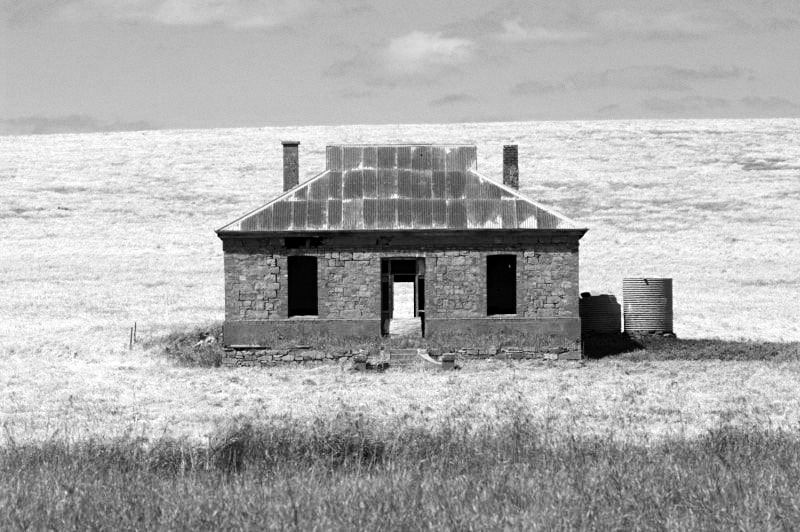
Following his retirement in 1881 both from publishing and from the Welsh Church, William Evans opened a bookshop in Bourke Street, Melbourne, and later returned to Ballarat to open another bookshop. The reason for his retirement from the Church remains unclear. It has been said that he grew disillusioned with the growing apathy of the Welsh settlers toward the church, evidenced by dwindling congregations. More likely, however, was his failing health. His daughter Ellen Winifred, is said to have overheard talk of her father having a tumour. He was also known to be concerned that, were he to stay in the service of the Welsh Church, his meagre salary would be insufficient to put aside funds for his family, were he to die. Although he no longer had his own chapel, he continued to preach in his beloved Welsh until his last days. Ellen Winifred recalled:
"His friends in Sebastopol used to send a cab to fetch him to the church and he used to sit on a high stool (during his illness) while he preached and the cab used to bring him home again. … He preached to the people in Sebastopol church up to a fortnight before his death, though so ill that day my mother begged him not to attempt it. He pleaded to go saying he would never ask her again; he went and he bade them farewell, we were not there, but we were told the congregation were in tears."
He died following a long illness, on August 4th 1883, shortly before his 57th birthday, and was buried in what is now referred to as ‘the old cemetery’ in Ballarat. In his obituary, the 'Ballarat Star' wrote that he had a "kind and considerate disposition; he did good for the sake of doing it alone."
Following his death the Victorian Calvinistic Methodist Connexion commissioned their Secretary, R B Williams, to write a biography of William Evans, in Welsh of course. ‘Memoir of the Rev. W.M. Evans’ quoted extensively from Evans's diaries. Unfortunately both the diaries and the original Welsh manuscript has been lost. There are, however, two surviving copies of an English translation. One copy resides in the National Library of Wales in Aberystwyth while the other was bequeathed to the Welsh Church in Melbourne by Ellen Winifred. Although only 10-years old when her father died, some five decades later she remembered him in this way:
“.......tall, calm in disposition, had a sense of dignity about him, which never repelled friendship, and fellowship, but prevented laxity of speech and manner. He was loved by the very people who checked bad language in his presence; he made them wish to live better lives and to be with him, as much as possible. … His hair was grey or white, of a silvery tint, early in life and it was abundant. His eyes were grey more than blue. He had a sense of humour and always engaged a laugh. … Few men I think had the love of the people like he had. He could be firm when necessary and was of a very independent nature.”
The Welsh church he founded in Melbourne city centre is still there and conducts two services a month in Welsh and it's Sunday school continues the tradition of holding classes in spoken and written Welsh. The Welsh language survived in Ballarat until the turn of the twentieth century and, it is said, could be heard spoken in the streets as late as 1910. R E Williams, the former editor of the 'Ballarat Chronicle', and himself of mixed Welsh and Cornish heritage, recalled, in an interview published in March 1935, how he had often heard,
“.....beautiful Welsh singing. When a miner came off shift, as he crossed the paddock homewards, you knew he came from Wales and gloried in it”.
What of the levels of religiosity of the Welsh who stayed in William Evans’s childhood village of Llanfrothen? Well, there is very little. Siloam chapel, where William Evans learnt to read and write, has been redundant for more than two decades and now privately owned by a friend of mine. In recent years it has been used as a rehearsal room for a local rock band. The Scotch Baptist chapel in Llanfrothen was converted into a private residence in the late 1990s. There are two churches in Llanfrothen, the oldest, St Brothen’s is redundant and in the care of the Friends of Friendless Churches due to it’s historical merit. The second is undergoing conversion to a private residence.
A little aside from the main road,
becalmed in a last-century greyness,
there is the chapel, ugly, without the appeal
to the tourist to stop his car
and visit it. The traffic goes by,
and the river goes by, and quick shadows
of clouds, too, and the chapel settles
a little deeper into the grass.
But here once on an evening like this,
in the darkness that was about
his hearers, a preacher caught fire
and burned steadily before them
with a strange light, so that they saw
the splendour of the barren mountains
about them and sang their amens
fiercely, narrow but saved
in a way that men are not now.
'The Chapel' by RS Thomas
Preachers no longer 'catch fire' in Llanfrothen, or Burra, or Ballarat. One thing would undoubtedly please William Meirion Evans, however. Llanfrothen village school still teaches its students in Welsh and according to the 2011 census, 76% of the population are able to speak the language fluently.

'Destined To Fail: The Ministry Of William Meirion Evans'. Original images and written content © Gary Hill 2012. All rights reserved. Not in public domain. If you wish to use my work for anything other than legal 'fair use' (i.e., non-profit educational or scholarly research or critique purposes) please contact me for permission first.

